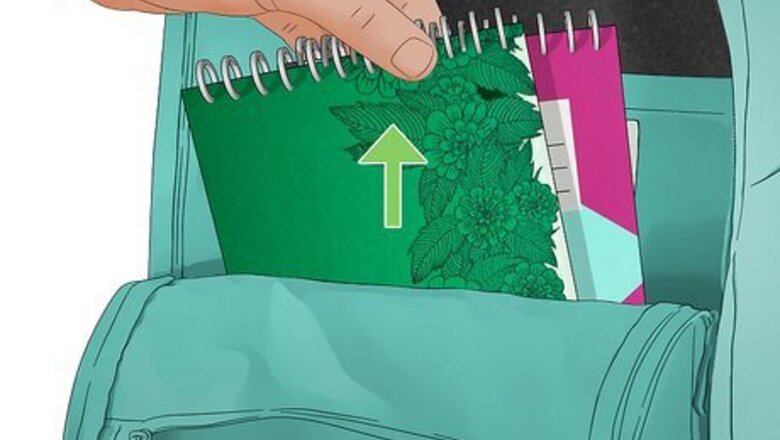
views
- Remove everything from your Kånken and shake out any dirt or crumbs before washing.
- Spot clean your Kånken by dipping a sponge or soft brush into a mixture of lukewarm water and mild detergent.
- Hang your Kånken in a well-ventilated area out of direct sunlight to air dry.
How to Wash A Kånken
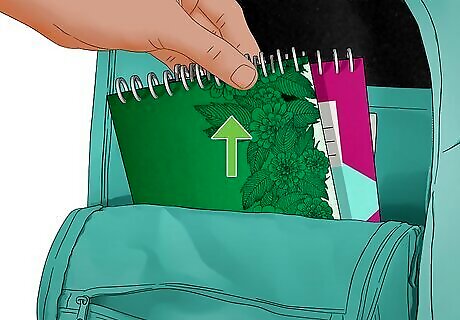
Empty the backpack. Be sure to check the pockets for loose debris like gum wrappers or pieces of paper. Once you’ve removed everything, shake the backpack upside down over a rubbish bin or an old newspaper page to remove crumbs and other debris. You can also use a handheld vacuum to get rid of any loose dirt and crumbs. Always remove any loose dirt before wetting your Kånken. If the dirt gets wet, your bag will get muddy and lead to a bigger mess. If any items are dirty, use this opportunity to clean them as you don’t want to put dirty items back into your bag once you’ve washed it. Check for a care label. Your Kånken might have a care label on a tag inside the bag. Read the label carefully and make note of any specific washing instructions or products to avoid. Note that the cleaning tips provided in this article are for the Kånken Classic styles, made of Vinylon-F, and the G-1000 style. If you have a different model, be sure to follow the manufacturer's guidelines when cleaning.
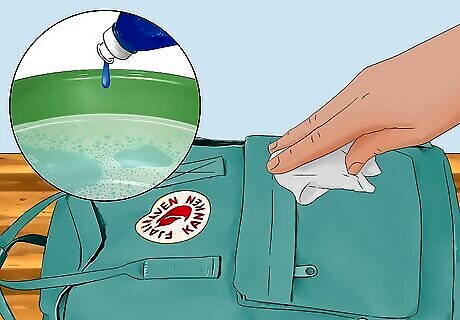
Spot clean the bag with water and mild detergent. Fill a large bowl with lukewarm water and mix in a few drops of mild detergent like dishwashing liquid or baby shampoo. Mix the liquid well until bubbles form. Dip the cloth or the soft side of a sponge into the washing mixture, and gently wipe the Kånken to remove light marks or stains. Do this for both the inside and outside of the backpack. Continue to wet the cloth or sponge as you go, but be careful not to use too much water as this could damage the material. Aim for a water temperature between 98 °F (37 °C) and 105 °F (41 °C), which is usually considered lukewarm. If you don’t have a thermometer, run the water over your wrist. If it feels a little warmer than your body temperature, you’re good to go. Replace the water when it gets too dirty. Kånken backpacks have a large opening for the main compartment, so you won’t need to turn them inside out to clean the inside.
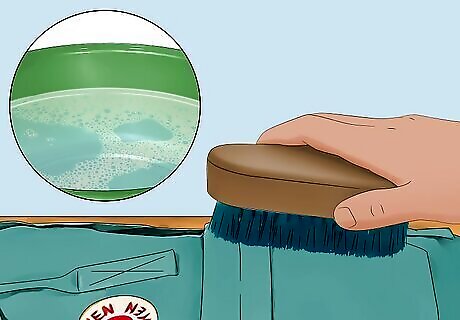
Scrub tough stains with a soft brush. A toothbrush can also be quite handy for this process. Dip your brush into the soapy water and scrub away tough stains. Use the brush to clean hard-to-reach areas like inside corners and small pockets. Once the dirt is loosened, wipe it away by dipping your brush into clean water or using your cloth or sponge.
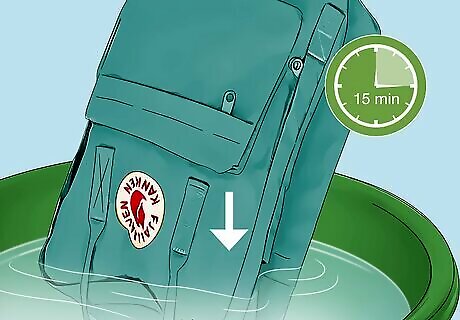
Soak the backpack in lukewarm water for 10-15 minutes (optional). If your Kånken is super dirty, scrubbing with a damp sponge or brush might not be enough. Fill your sink or bathtub with lukewarm water and submerge your bag, making sure all the pockets are open. Gently shake the bag to loosen any dirt and scrub it with a soft brush. If possible, try to avoid using soap at this step to best protect the material of your bag. If water alone isn’t enough, add a small amount of mild detergent. Be sure to rinse your backpack thoroughly and squeeze out any excess water. In most cases, you shouldn’t have to soak your Kånken, as spot cleaning will be enough. The Fjållråven brand does not recommend soaking Kånkens to clean them, so be cautious if you choose to wash yours this way.
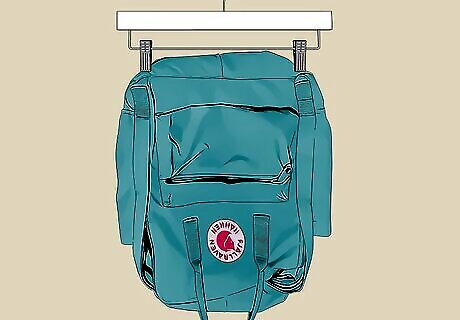
Hang the backpack to dry. Once cleaned to your satisfaction, hang the backpack in a well-ventilated area out of direct sunlight and allow it to air dry. Colors may fade if the bag is left in strong sunlight. Check that the bag is completely dry before use. Items like paper and electronics can be damaged by moisture. This may take up to 36 hours. As your Kånken dries, gently reshape any sunken or dented areas with your hands to ensure it looks its best. While waiting for your Kånken to dry, use this time to go through your belongings and reorganize your backpack.
Kånken Maintenance Tips
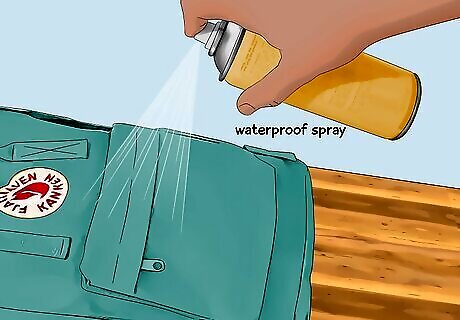
Apply a waterproof spray. Kånkens are made from durable, water-resistant material, but adding a waterproof spray often helps them look new for longer. Make sure your bag is completely dry, then follow the instructions provided with your spray to apply a thin, even layer over the whole bag. Let the spray dry before using your Kånken.
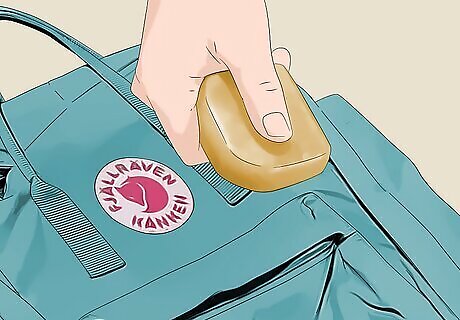
Wax your G-1000 Kånken with Greenland Wax. After cleaning your G-1000 canvas Kånken, rub a block of Greenland Wax against the fabric in long, clean strokes. Apply a bit of pressure to create a thin even layer and avoid jerky movements. Then, use an iron or hair dryer on low to moderate heat to melt the wax into the fabric, again using long, even strokes. Repeat the process to make the fabric even more water-resistant. Greenland Wax melts between 131-140°F (55-60°C), so try to keep the temperature in this range so the wax doesn’t get too runny. If you use an iron, remember to wipe it off before ironing other garments. Do not wax any other type of Kånken. G-1000 is the only fabric that can be waxed.

Don’t overfill your backpack. Kånkens come in many sizes, so size up if you think you’re going to be carrying a lot of heavy items. While the backpacks do not have an official weight limit, Fjållråven suggests keeping the standard (16-liter volume) Kånken Classic to a few pounds. Additional weight puts strain on the straps and zippers. If you want to carry a laptop, be sure to get a Kånken laptop bag instead, as laptops are too heavy for the standard Kånken.
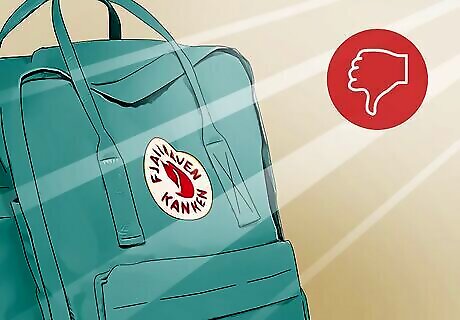
Keep your Kånken out of direct sunlight. While you may use your Kånken for outdoor activities like hiking or camping, try to keep it away from the sun as much as possible, as the light will cause the fabric to fade faster. Try to store it in the shade or indirect sunlight.
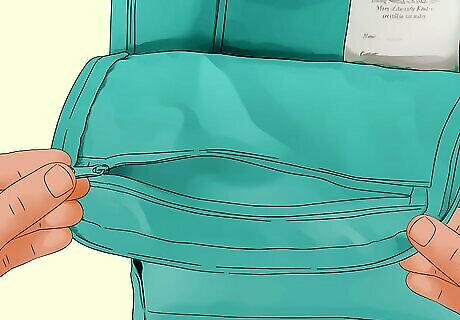
Don’t yank stuck zippers. Forcefully tugging at your bag’s zippers can cause unnecessary damage. Instead, try to gently remove the obstruction, and if you can’t remove it yourself, take it to a backpack repair service. To fix a stuck zipper, try rubbing a lubricant like lip balm or soap on the teeth or vegetable oil on the zipper slider.
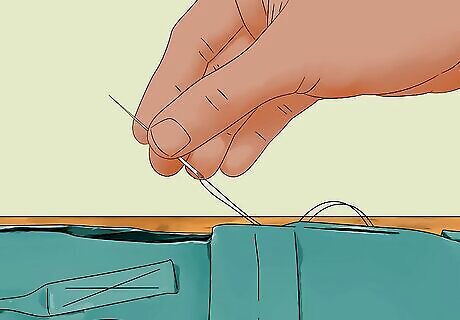
Repair rips and tears immediately. While Kånkens are generally durable, rips and cuts can happen. Sew or patch them yourself or take them to a backpack repair service. Take care of the rips as soon as possible to avoid them getting bigger and harder to repair.


















Comments
0 comment